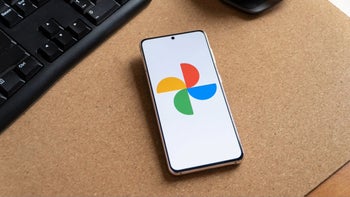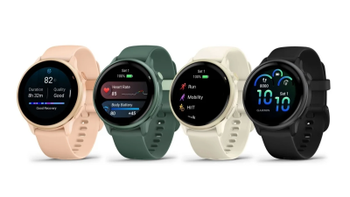Google's Pixel 10 family is here at last with refined designs, more power, new AI skills, and more
Evolutionary rather than revolutionary, the Pixel 10, Pixel 10 Pro, and Pixel 10 Pro XL are up for pre-order today at the same prices as their predecessors.
We may earn a commission if you make a purchase from the links on this page.

The big day has finally arrived for hardcore Google fans looking to ditch their Pixel 8-series (or older) device, and despite some incredibly detailed pre-launch leaks from some rock-solid industry insiders, the search giant has managed to keep a few key Pixel 10, 10 Pro, and 10 Pro XL features a secret until their official announcement.
For the most part, Big G's highly anticipated new super-premium handsets are strikingly similar to their 2024-released predecessors, but if you look back at our comprehensive Pixel 9, Pixel 9 Pro, and Pixel 9 Pro XL reviews, you'll understand that's not necessarily a bad thing.
Pixel 10 series design - all about refinement... again
Look, you can't expect Google to reinvent the wheel (or the rectangular slab) every year, especially when we can all agree that the company has come really close to cosmetic perfection after almost a decade of continuous refinement work and a few failed experiments.
That being said, it's certainly nice to see the "iconic" camera bar subtly revised to stand out even more on the Pixel 10 family without making the new devices noticeably thicker or heavier. Yes, the overall product weight has slightly increased on all three models compared to their Pixel 9-series forerunners, but that's primarily due to some significant battery size bumps... we'll talk more about in a second.
An interesting claim made by Google is that the Pixel 10 trio uses the "most recycled materials yet for a Pixel" generation, which should however have no impact on long-term durability. In fact, I believe the company didn't market the aluminum frames of the Pixel 9, 9 Pro, and 9 Pro XL as "spacecraft-grade", which means their successors might be even more robust.
The "vanilla" Pixel 10 is definitely more colorful than the "base" Pixel 9, launching in Obsidian, Frost, Indigo, and Lemongrass hues, while the Pixel 10 Pro and 10 Pro XL are a little less playful and a little more "businessy" with Obsidian, Porcelain, Moonstone, and Jade options.
Is the Pixel 10 powerful enough?
Before trying to answer that question, let's take a quick look at the family's full specifications:
| Specs | Pixel 10 | Pixel 10 Pro | Pixel 10 Pro XL |
|---|---|---|---|
| Dimensions | 152.8 x 72 x 8.6 mm | 152.8 x 72 x 8.6 mm | 162.8 x 76.6 x 8.5 mm |
| Weight | 204 grams | 207 grams | 232 grams |
| Display | 6.3-inch Actua, 20:9 aspect ratio, 2424 x 1080 pixel resolution, 422 ppi, 60 - 120 Hz refresh rate, Up to 3000 nits peak brightness, OLED, Corning Gorilla Glass Victus 2 | 6.3-inch Super Actua (LTPO), 20:9 aspect ratio, 2856 x 1280 pixel resolution, 495 ppi, 1 - 120 Hz refresh rate, Up to 3300 nits peak brightness, OLED, Corning Gorilla Glass Victus 2 | 6.8-inch Super Actua (LTPO), 20:9 aspect ratio, 2992 x 1344 pixel resolution, 486 ppi, 1 - 120 Hz refresh rate, Up to 330 nits peak brightness, OLED, Corning Gorilla Glass Victus 2 |
| Processor | Google Tensor G5, Titan M2 security coprocessor | Google Tensor G5, Titan M2 security coprocessor | Google Tensor G5, Titan M2 security coprocessor |
| Memory and storage | 12GB RAM, 128/256GB internal storage | 16GB RAM, 128GB/256GB/512GB/1TB | 16GB RAM, 256GB/512GB/1TB |
| Rear cameras | Main: 48MP wide with f/1.7 aperture, 82° field of view, 1/2" image sensor size Secondary: 13MP ultrawide with f/2.2 aperture, 120° field of view, 1/3.1" image sensor size Tertiary: 10.8MP telephoto with optical image stabilization, f/3.1 aperture, 23° field of view, 1/3.2" image sensor size, 5x optical zoom Super Res Zoom up to 20x | Main: 50MP wide with f/1.68 aperture, 82° field of view, 1/1.3" image sensor size Secondary: 48MP ultrawide with autofocus, f/1.7 aperture, 123° field of view, 1/2.55" image sensor size Tertiary: 48MP telephoto with OIS, f/2.8 aperture, 22° field of view, 1/2.55" image sensor size, 5x optical zoom Pro Res Zoom up to 100x | Main: 50MP wide with f/1.68 aperture, 82° field of view, 1/1.3" image sensor size Secondary: 48MP ultrawide with autofocus, f/1.7 aperture, 123° field of view, 1/2.55" image sensor size Tertiary: 48MP telephoto with OIS, f/2.8 aperture, 22° field of view, 1/2.55" image sensor size, 5x optical zoom Pro Res Zoom up to 100x |
| Front camera | 10.5MP with autofocus, f/2.2 aperture, 95° ultrawide field of view | 42MP with autofocus, f/2.2 aperture, 103° ultrawide field of view | 42MP with autofocus, f/2.2 aperture, 103° ultrawide field of view |
| Battery capacity | 4,970mAh (typical)/4,835mAh (minimum) | 4,870mAh (typical)/4,707mAh (minimum) | 5,200mAh (typical)/5,079mAh (minimum) |
| Charging | Up to 55% in about 30 minutes using 30W USB-C PPS charger or higher (sold separately) Pixelsnap wireless charging (Qi2-certified) up to 15W | Up to 55% in about 30 minutes using 30W USB-C PPS charger or higher (sold separately) Pixelsnap wireless charging (Qi2-certified) up to 15W | Up to 70% in about 30 minutes using 45W USB-C PPS charger or higher (sold separately) Pixelsnap wireless charging (Qi2.2-certified) up to 25W |
| Materials and durability | Corning Gorilla Glass Victus 2 polished back with satin finish spacecraft-grade aluminum frame IP68 water and dust resistance | Corning Gorilla Glass Victus 2 silky matte back with polished finish spacecraft-grade aluminum frame IP68 water and dust resistance | Corning Gorilla Glass Victus 2 silky matte back with polished finish spacecraft-grade aluminum frame IP68 water and dust resistance |
| Software | Android 16 Seven years of OS, security, and Pixel Drop updates guaranteed | Android 16 Seven years of OS, security, and Pixel Drop updates guaranteed | Android 16 Seven years of OS, security, and Pixel Drop updates guaranteed |
| Connectivity | Wi-Fi 6E, Bluetooth 6, NFC | Wi-Fi 7, Bluetooth 6, NFC, Ultra-Wideband chip, Thread networking technology | Wi-Fi 7, Bluetooth 6, NFC, Ultra-Wideband chip, Thread networking technology |
Okay, so just as expected, the Pixel 10, 10 Pro, and 10 Pro XL all share a hot new Google Tensor G5 SoC. This is (unsurprisingly) advertised as the search giant's "most powerful silicon yet", but of course, we'll have to wait for post-release tests and real-life use to find out if the latest Google-made chip can hold its ground against Qualcomm's Snapdragon 8 Elite (found inside the likes of the Galaxy S25, S25 Ultra, and OnePlus 13) or Apple's fast-approaching A19 and A19 Pro.
For the time being, it's definitely encouraging to see the Tensor G5 promise 34 and 60 percent improvements in central processing and machine learning performance respectively compared to the Tensor G4 powering last year's Pixel 9 trio (and the Pixel 9 Pro Fold, of course). Curiously enough, there are no words on any notable graphics processing upgrades, but the Pixel 10 series still sounds like an absolute beast, especially when you also take battery life into consideration.
Yes, the Pixel 10, 10 Pro, and 10 Pro XL all manage to squeeze bigger cells than their predecessors into largely unchanged bodies, promising "30+ hour" endurance between charges in "normal" usage conditions and "up to 100 hours" of battery life with Extreme Battery Saver functionality enabled. The charging speeds are also enhanced across the board, and while the entire family predictably supports Google's hot new Pixelsnap accessories, only the Pixel 10 Pro XL can squeeze up to 25W speeds out of them.
Camera hardware and software - what's changed, what's not
This wouldn't be a Google release without an extensive discussion about photography, and while the camera hardware on the Pixel 10 Pro and 10 Pro XL looks virtually unchanged, the "vanilla" Pixel 10 employs a totally different combination of rear-facing snappers than the non-Pro Pixel 9.
We're talking a rather modest-sounding 13MP secondary ultra-wide-angle lens instead of a 48MP one on the Pixel 9, but also an entirely new 10.8MP telephoto sensor... that's obviously not quite as advanced as the Pixel 10 Pro and 10 Pro XL's telephoto camera. The result should be a more versatile, and yes, a more powerful imaging experience, which Google claims is unrivaled in the Pixel 10's "class", at least in terms of zoom quality.
Of course, "serious" shutterbugs will want to primarily consider the Pixel 10 Pro and 10 Pro XL, which naturally claim to deliver Google's "best camera system yet", with 100x Pro Res Zoom as the most important improvement over the already exceptional 9 Pro and 9 Pro XL. Gemini makes a bunch of other magical photography stuff possible, including Auto Best Take, Camera Coach guides, Face Unblur, Auto Unblur, Auto frame, Photo Unblur, and of course, Magic Eraser.
So... much... AI goodness
Does Google have the best artificial intelligence features in the mobile industry right now? Even if you don't think that's true (which it kind of unquestionably is), you have to appreciate the scale and ambition of some of the latest Gemini Nano-powered tools.
Magic Cue is without a doubt the most exciting and sophisticated such tool, crucially contributing to making the Pixel 10 family truly proactive in addition to more powerful than all previous Google-made phones. On paper, this looks like a potential game changer for AI technology as a whole, aiming to not just answer your questions and solve your online problems, but anticipate them across apps and services like Phone and Google Messages.
The aforementioned Camera Coach feature is another very interesting use of Gemini intelligence, offering tips for lighting, composition, and a lot more to help you become a better photographer. Apart from expanding the reach and power of its AI skill set, Google is obviously also working hard on continuously improving existing functionalities like Call Screen, Gemini Live, and Voice Translate.
Pricing and availability
In line with pretty much all recent rumors (and unlike the Pixel 10 Pro Fold), Google's new non-foldable phones are all set for a US release by the end of the month. Specifically, on August 28, although you don't have to wait until then to place your pre-order and be sure you'll get your hands on one of these bad boys as soon as possible.
Also in line with all pre-launch speculation, the Pixel 10 starts at $799, the Pixel 10 Pro costs $999 and up, and the cheapest Pixel 10 Pro XL model can be yours for $1,199. Keep in mind that the 10 Pro XL starts at 256 gigs of internal storage space, unlike the Pixel 10 and 10 Pro, which offer 128 gigs of local digital hoarding room in their entry-level configurations.
Follow us on Google News



![New T-Mobile CEO has everyone on the edge of their seats with new teaser [UPDATED]](https://m-cdn.phonearena.com/images/article/175840-wide-two_350/New-T-Mobile-CEO-has-everyone-on-the-edge-of-their-seats-with-new-teaser-UPDATED.webp)










Things that are NOT allowed:
To help keep our community safe and free from spam, we apply temporary limits to newly created accounts: